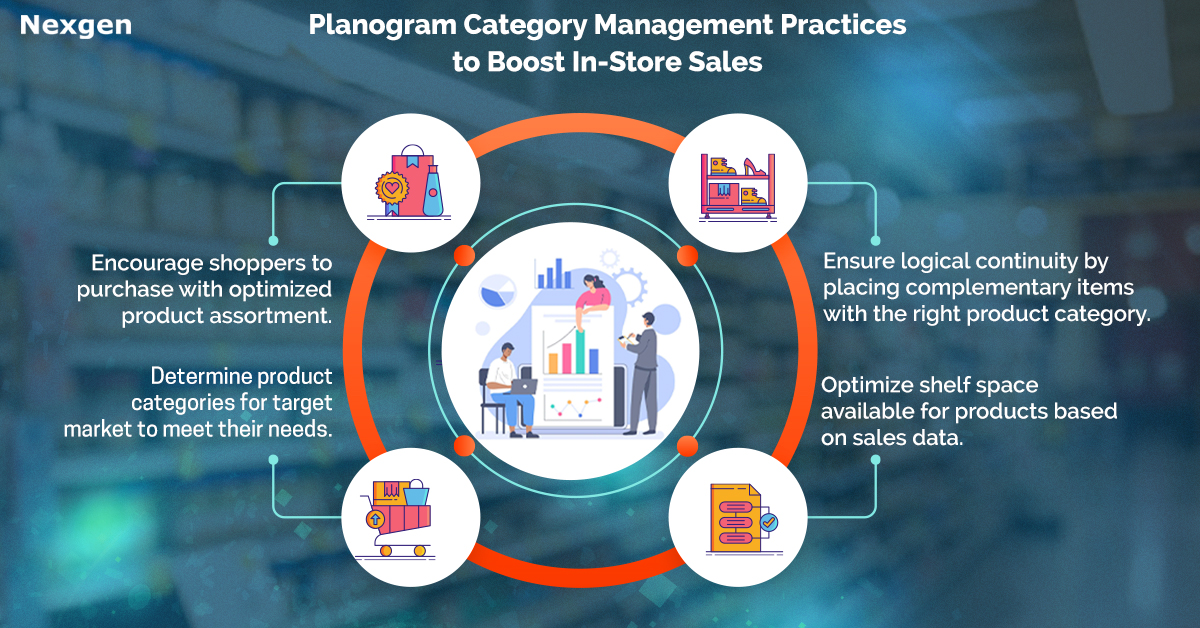Effective merchandising is about having a good product assortment on shelves and displaying such items to entice shoppers to buy. And why would you not want to do that? By merchandising effectively, you can boost your sales and improve your store performance. Fortunately, you can deliver great product assortment and store layouts using category management software.
The shopping experience you offer to your shoppers can influence their attitude and perception of your store. A common criterion used to help identify the best-selling products and optimize categories that fit their needs by using planogram software. Planograms are category management tools, which help retailers place product categories based on target segments and identify how customers encounter those products on store shelves. This can easily optimize shelf space available for products based on sales data. This helps to analyze sales and extend product categories and assortment. This results in increased sales and maximizes retail profit. So, the following are some planogram category management practices to boost sales:

- Assortment that meets customer needs: The product assortment you choose for your store is a critical shopping experience element. Why? Let us put it this way: How can you entice shoppers to shop at your store if you do not have the products they are looking for? Take, for example, if you are stocking a condiments category, you find that it is better to move certain products from your shelf to improve their performance. By doing this, ensure that the products are all in the same position and those that should not be there are removed. With this optimized assortment, you can encourage shoppers to try new products. If you have placed an expensive item at eye-level, they can choose that one instead of their usual item. This allows you to increase your sales while still providing them with the products they want.
- Identifies products for target segments: As a retailer, you need to figure out your shopper’s needs and understand how they perceive a particular category to satisfy their shopping needs. It is important to identify the product category, since it helps you divide products into different categories and boost sales. Let’s say, while choosing a beverage, your consumer will consider things like sugar content, flavor, or size. For instance, Customer A is motivated by beverages without sugar, whereas Customer B favors beverages with sugar. In either case, you must place goods that appeal to each customer separately in order to meet their needs. Using planograms, you can determine the products for your target market, and understand how your customers will see those products on the shelves. You can also figure out how your customer will encounter those items on the shelves and how much space should be effectively allotted to them.
- Complementary items that can be placed strategically: Placing complementary items with the right product categories ensures logical continuity within the aisles. This increases the chance of impulse purchases by shoppers. For instance, matching outfits for mother and daughter or accessories for apparel can be displayed at a clothing store to encourage impulse purchases. This will help you increase sales while also enhancing the customer experience at your store. Products from several categories can be grouped together using a planogram to maximize the likelihood that they will sell.
Overview of Nexgen POG
Nexgen POG is a robust and user-friendly cloud-based visual merchandising tool. It is designed for quick and efficient planogramming with minimal effort. Planograms can be designed by easily dragging and dropping the products. The multi-device compatibility feature of POG allows you to obtain, share and edit planograms on any device, including your phone. It helps in designing store-specific planograms for increased product visibility and sales.
Get Your Free Trial Now!